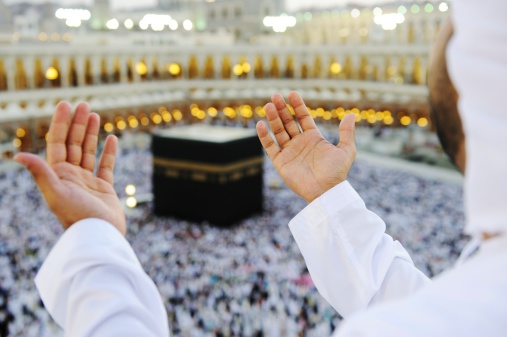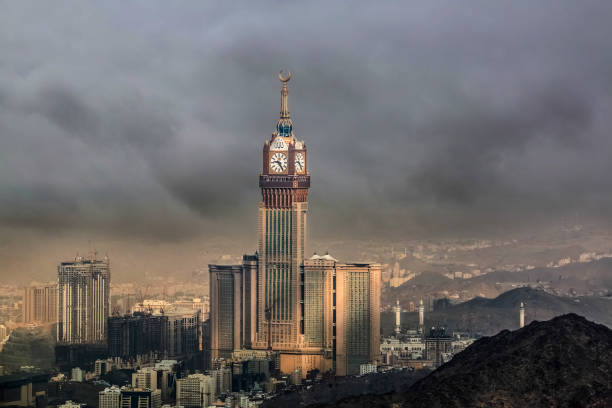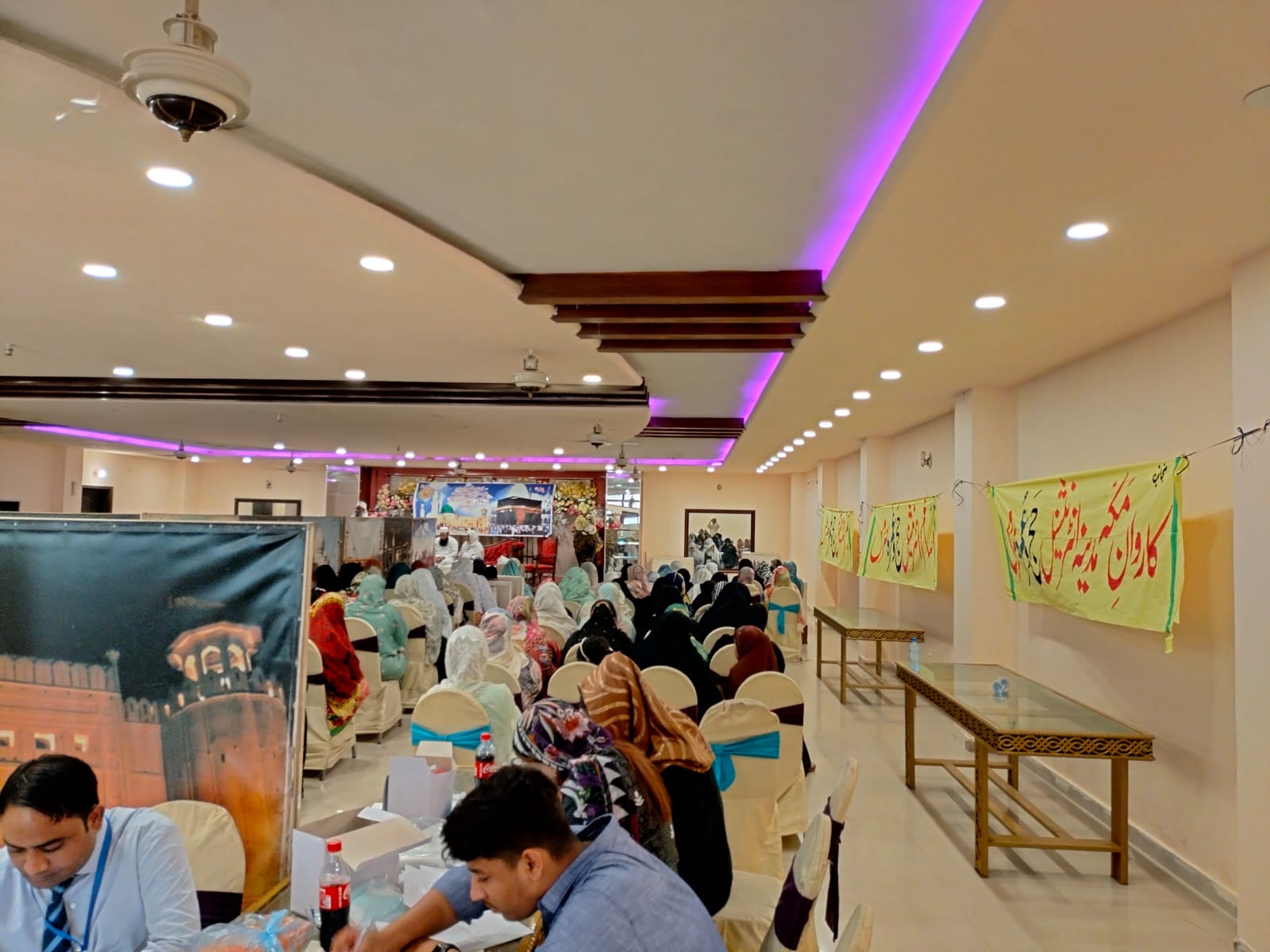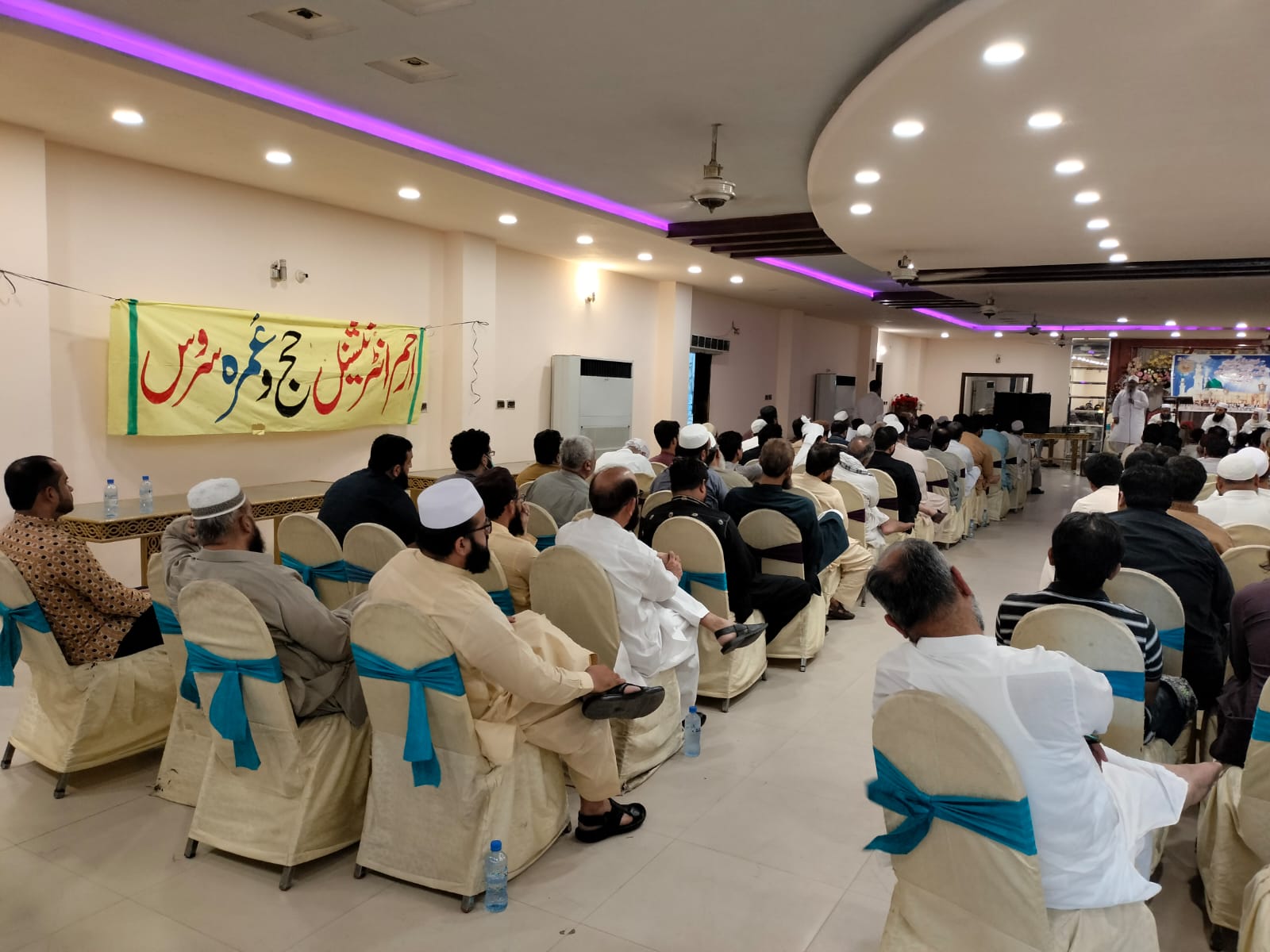About Hajj Umrah And International Flights
About Hajj
Hajj, also spelled ḥadjdj or hadj, in Islam, the pilgrimage to the holy city of Mecca in Saudi Arabia, which every adult Muslim must make at least once in his or her lifetime.
The hajj is the fifth of the fundamental Muslim practices and institutions known as the Five Pillars of Islam. The pilgrimage rite begins on the 7th day of Dhū al-Ḥijjah
(the last month of the Islamic year) and ends on the 12th day.
When the pilgrim is about 6 miles (10 km) from Mecca, he or she enters the state of holiness and purity known as ihram and dons the ihram garments; for men they consist of two white seamless sheets that are wrapped around the body, while women may wear sewn clothes. The pilgrims cut neither their hair nor their nails until the pilgrimage rite is over. They enter Mecca and walk seven times around the sacred shrine called the Kaaba, in the Great Mosque, kiss or touch the Black Stone (al-Ḥajar al-Aswad) in the Kaaba, pray twice in the direction of the Maqām Ibrāhīm and the Kaaba, and run seven times between the minor prominences of Mount Ṣafā and Mount Marwah. On the 7th day of Dhū al-Ḥijjah the pilgrims are reminded of their duties. At the second stage of the ritual, which takes place between the 8th and the 12th days of the month, the pilgrim visits the holy places outside Mecca—Jabal al-Raḥmah, Muzdalifah, and Minā—and sacrifices an animal in commemoration of Abraham’s sacrifice. Male pilgrims’ heads are then usually shaved, and female pilgrims remove a lock of hair. After the rajm ritual at Minā, in which pilgrims throw seven stones at three walls (formerly pillars, symbolizing the Devil) on three successive days, the pilgrim returns to Mecca to perform the farewell ṭawāf, or circumambulation, of the Kaaba before leaving the city.

The hajj is incumbent on all Muslims who are physically and financially able to make the pilgrimage,
but only if their absence will not place hardships on their family. A person may perform the hajj by proxy, appointing a relative or friend going on
the pilgrimage to “stand in” for him or her.


Muslims of any age can perform Umrah and Hajj, and there are no restrictions on how many times someone can make the journey in their lifetime.
But women under the age of 45 must be accompanied by a mahram, a male family member or relative, above the age of 17. Women over 45 are permitted to travel with tour groups, without the need of a mahram.
Surrounding the Masjid al-Haraam complex are a range of hotels – from budget-friendly to seven-star establishments.
About Umrah
Umrah is the name given to a pilgrimage to Mecca, a shorter version of the annual Hajj gathering. The word “Umrah” in Arabic means “visiting a populated place”.
Umrah offers an opportunity for Muslims to refresh their faith, seek forgiveness and pray for their needs. One who performs it is said to be cleansed of their sins.
Worshippers from outside Saudi Arabia usually travel in by plane and need to apply for a special Umrah visa that is valid for a month. They must also have a meningitis vaccination, along with the right paperwork to prove it.
Travellers from neighbouring countries may cross borders by car, but will also need a visa.
For Saudis and those already living and working within the country, no special documentation is needed.

What are the main differences between Umrah and Hajj?
Umrah is voluntary but Hajj is compulsory for those who are physically well and can afford it.
Hajj is one of Islam’s five pillars, and Muslims who are able to must perform it at least once in their lifetime.
Umrah can be performed throughout the year, but Hajj is performed only at a specific time, between the 8th and the 13th of Dhul Hijah, the last month in the Islamic lunar calendar.
Umrah is almost a spiritual “quick-fix” and can be completed in under two hours, depending on how busy it is. Hajj is a more intense experience over several days.
Hajj is one of the largest annual gatherings of people in the world, with more than two million pilgrims attending each year from around 188 countries. Umrah, which is known as the “smaller” pilgrimage, might be performed by several million pilgrims each year, most probably due to it being cheaper and quicker to complete.
The focal point for both pilgrimages is the Kaaba, the black boxed structure located in Mecca’s large mosque complex known as Masjid al-Haraam. It is also in the direction of the Kaaba that Muslims face when offering their five daily prayers, wherever they are in the world.








